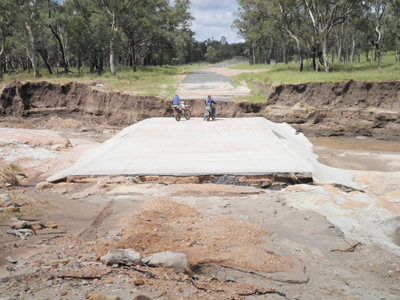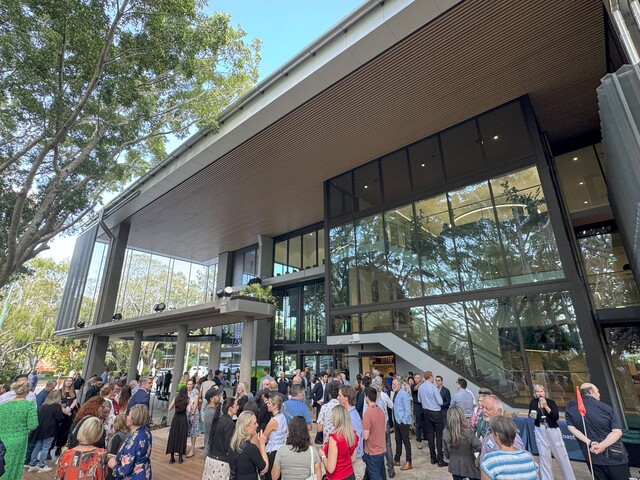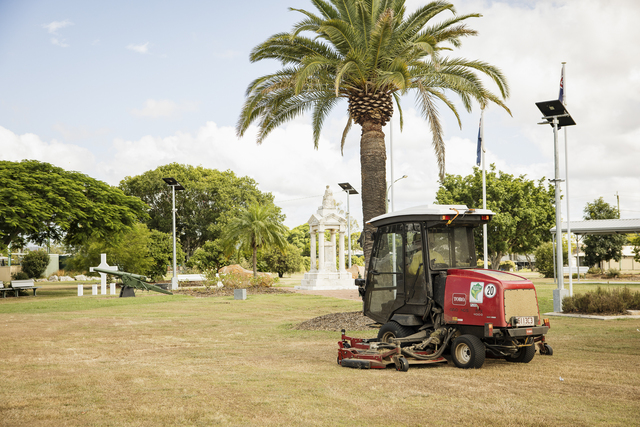Eleven people have died and more than 200,000 people in 40 communities across Queensland have been impacted in some way by the floods that have hit large parts of the State, leaving behind a damage bill of at least $5 billion.
Latest claims predict $1 billion in damage before the rebuild even begins.
Data collected by the Bureau of Meteorology show that Australia experienced its third wettest year on record in 2010, with the mean rainfall of 690 millimetres well above the long term average of 465 millimetres.
The National Climate Centre said it is the rapid transition from the El Nino climate pattern to La Nina that is the cause of major flooding across various parts the country.
In many Queensland communities, this flooding has forced hundreds of people to leave their homes, some lucky enough to have family or friends to stay with, others resorting to evacuation centres. Billions of dollars in damage has also occurred to roads, infrastructure, homes vehicles and more.
And while some towns, like Emerald in Central Highlands Regional Council, are beginning the cleanup process, others are preparing for what is to come. At the time of publication, Queensland was expecting more heavy downpours over its southeastern corner and the rain is unlikely to ease for the next three months.
With 80 per cent of properties at risk in St George in Balonne Shire in the State’s southwest, levee banks have been erected and emergency plans are being consolidated, with evacuations not ruled out. The town was devastated by floods less than 12 months ago when the river reached 13.39 metres in March 2010.
The floods have been particularly hard felt in the Rockhampton Region, but Council’s Local Disaster Management Group (LDMG) is happy with how the community prepared for the situation.
Rockhampton Regional Council Mayor and LDMG Chair, Councillor Brad Carter is pleased with how the community has worked together and listened to key information provided by the LDMG during this tough time.
“The Local Disaster Coordination Centre has received more than 5,000 calls since the flooding started, which is great to see the community taking advantage of the support available to them and acting on the information provided to them,” Councillor Carter said.
“The LDMG’s key priorities during this time have been to ensure the safety of the Rockhampton community as well as securing the key infrastructure which will support the recovery of the community once this situation has passed.”
While community spirits have remained considerably high given the conditions, and councils have handled the situation well, Local Government Association of Queensland General Manager Greg Hoffman said communities will be left with a huge damage bill. He said the cost of repairing damage to local roads, bridges, water supplies and waste facilities alone is likely to be in the order of $500 million.
“That bill will be on top of the estimated $600 million to $1 billion worth of damage to State controlled public assets, and in addition to the repair bill following the devastation wrought by floods in north Queensland earlier in December,” Greg Hoffman said.
He said the immediate focus was on ensuring the safety and security of people in the path of some of the most devastating and widespread floods to hit the State in living memory. However, once the flood waters recede and the focus is shifted to recovery, the challenge will be how best to tackle such a massive and costly repair task.
“We will be looking to identify those priority hotspots where immediate work is needed to restore water supplies and vital transport links,” Greg Hoffman said. “We will work with councils across the State as well as the Queensland Government in helping to source people, plant and equipment to assist with restoration of essential services in a coordinated manner.”
Greg Hoffman said the roads network across the State would need billions of dollars for repairs and maintenance to recover from the floods. He said large parts of Queensland would struggle to revive economic activity due to the damage to roads.
In addition, the closure of 40 of Queensland’s mines due to the mass flooding is costing the State up to $100 million a day in coal exports, and it could take months to bring some back into production.
Meat, fruit and vegetable prices are also set to rise across the country.
A Flood Recovery Taskforce has been established, led by Major General Mick Slater. It will focus on rebuilding homes, economies, regional communities and infrastructure.








